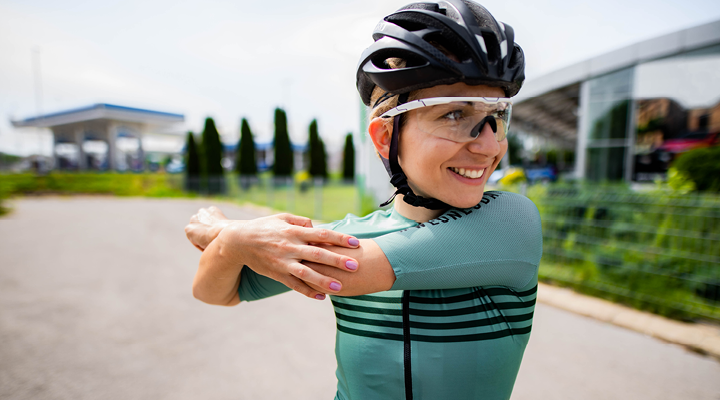Athletes know the importance of protecting their bodies when playing sports. Helmets, pads, and mouthguards are just a few of the items used to keep them safe. When it comes to vision and eye protection, however, there tends to be less vigilance.
Discover why using eye protection while participating in sports is an essential part of keeping your eyes and vision safe.
Most sports should require eye protection
What sports come to mind when you think of eye injuries? People tend to think about action sports such as skiing, lacrosse, and mountain biking; however, there are other activities such as basketball, hockey, boxing, and soccer where participants run the risk of an eye injury.
Although many traditional sports in the United States don’t require eye protection, parents and participants may want to consider adding it to their list of protective items.
Below is a chart of activities with varying risks of eye injury:
Some sports, such as paintball and fencing, run a high risk of eye injury and require participants to wear eye protection. However, others such as hockey, baseball, and softball don’t require eye protection. Unfortunately, significant injuries can occur if a player takes a hockey puck or ball to the eye.
Sports such as biking, skiing, snowboarding, and swimming have a lower injury risk, but that doesn’t mean eye protection isn’t a good idea. Bikers should wear eye protection to prevent small items such as rocks or sand from entering their eyes. Skiers and snowboarders get multiple benefits from wearing goggles. Not only do their goggles prevent debris and wind from getting into their eyes, but many types also have protection against the sun.
Eye protection can also help prevent infections in some cases. Swim goggles protect against chlorine, bacteria, and other chemicals from entering the eye. These chemicals can cause irritation and other medical problems in the eye.
Sport-related eye injuries
Sport-related eye injuries are more common than many people think. Here are some of the types of eye injuries that can occur when playing sports without proper eye protection:
- Corneal Abrasion: Corneal abrasion occurs when the cornea, or “the clear, protective ‘window’ at the front of the eye,” is scratched or injured. This tends to happen when a small object such as a pebble, dirt, toy, or ball hits the eye.
- Hyphema: Hyphema is bleeding in and around the eye, usually after being struck by something. If this appears, it is crucial to get medical care immediately.
- Black Eye: A black eye occurs after impact with the eye causes the surrounding tissue to bruise.
- Fractures: Fractures occur when one or more bones surrounding the eye are broken. This is usually caused by a significant impact. Orbital fractures can cause severe damage to the eye, so going to see an eye doctor is imperative.
- Eyelid laceration: Eyelid lacerations are scratches or cuts that occur on the eyelid. If this happens, have an eye physician examine the cornea, pupil, and retina to make sure the laceration doesn’t impair you or your child’s vision.
Choosing the right eye protection
The best way to protect your eyes and vision is to choose the correct protective gear. Different types of sports glasses and goggles are available for reasonable prices. Here are some of the most common options:
- Sports glasses: Also known as “rec specs,” sports glasses are more common in sports with limited contact or a lower intensity.
- Sports goggles: More commonly used in sports with high speeds and the potential for contact. This is because sports goggles stay on your face much better than sports glasses.
Pro tip: Sports goggles and sports glasses can often be customized with prescription lenses. Be sure to talk with a vision specialist for more information.
If you don’t already have insurance, check out DeltaVision to get coverage today.
Lastly, it’s crucial that whatever type of eye protection you get fits correctly. Protective eye gear that doesn’t fit properly may not provide adequate protection and may compromise your vision, which could result in serious injury.
Looking for more information on keeping your eyes healthy? Check out, “The Sun and Our Vision | Prevent Eye Damage from the Sun.”


